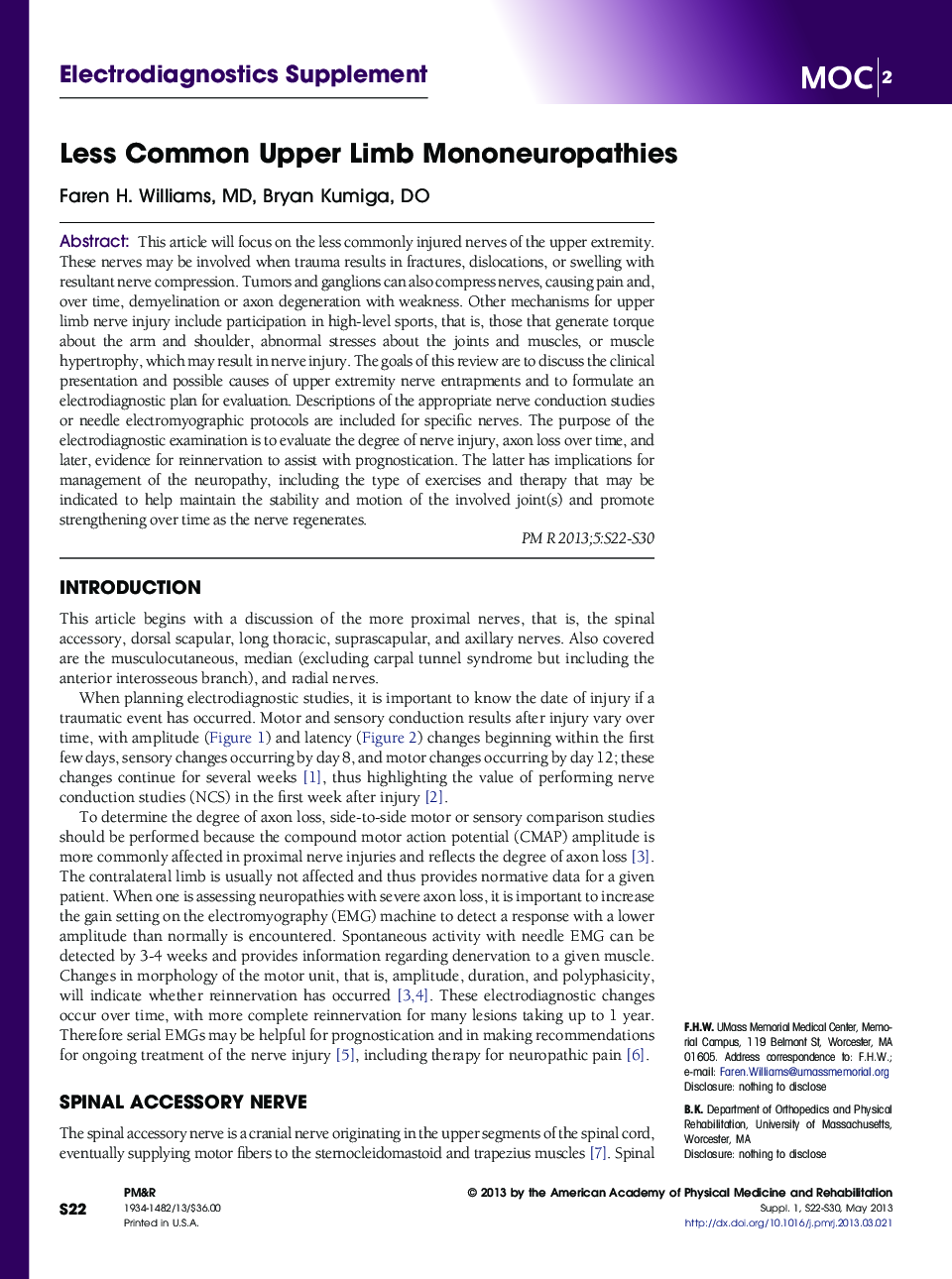| Article ID | Journal | Published Year | Pages | File Type |
|---|---|---|---|---|
| 2705676 | PM&R | 2013 | 9 Pages |
This article will focus on the less commonly injured nerves of the upper extremity. These nerves may be involved when trauma results in fractures, dislocations, or swelling with resultant nerve compression. Tumors and ganglions can also compress nerves, causing pain and, over time, demyelination or axon degeneration with weakness. Other mechanisms for upper limb nerve injury include participation in high-level sports, that is, those that generate torque about the arm and shoulder, abnormal stresses about the joints and muscles, or muscle hypertrophy, which may result in nerve injury. The goals of this review are to discuss the clinical presentation and possible causes of upper extremity nerve entrapments and to formulate an electrodiagnostic plan for evaluation. Descriptions of the appropriate nerve conduction studies or needle electromyographic protocols are included for specific nerves. The purpose of the electrodiagnostic examination is to evaluate the degree of nerve injury, axon loss over time, and later, evidence for reinnervation to assist with prognostication. The latter has implications for management of the neuropathy, including the type of exercises and therapy that may be indicated to help maintain the stability and motion of the involved joint(s) and promote strengthening over time as the nerve regenerates.
